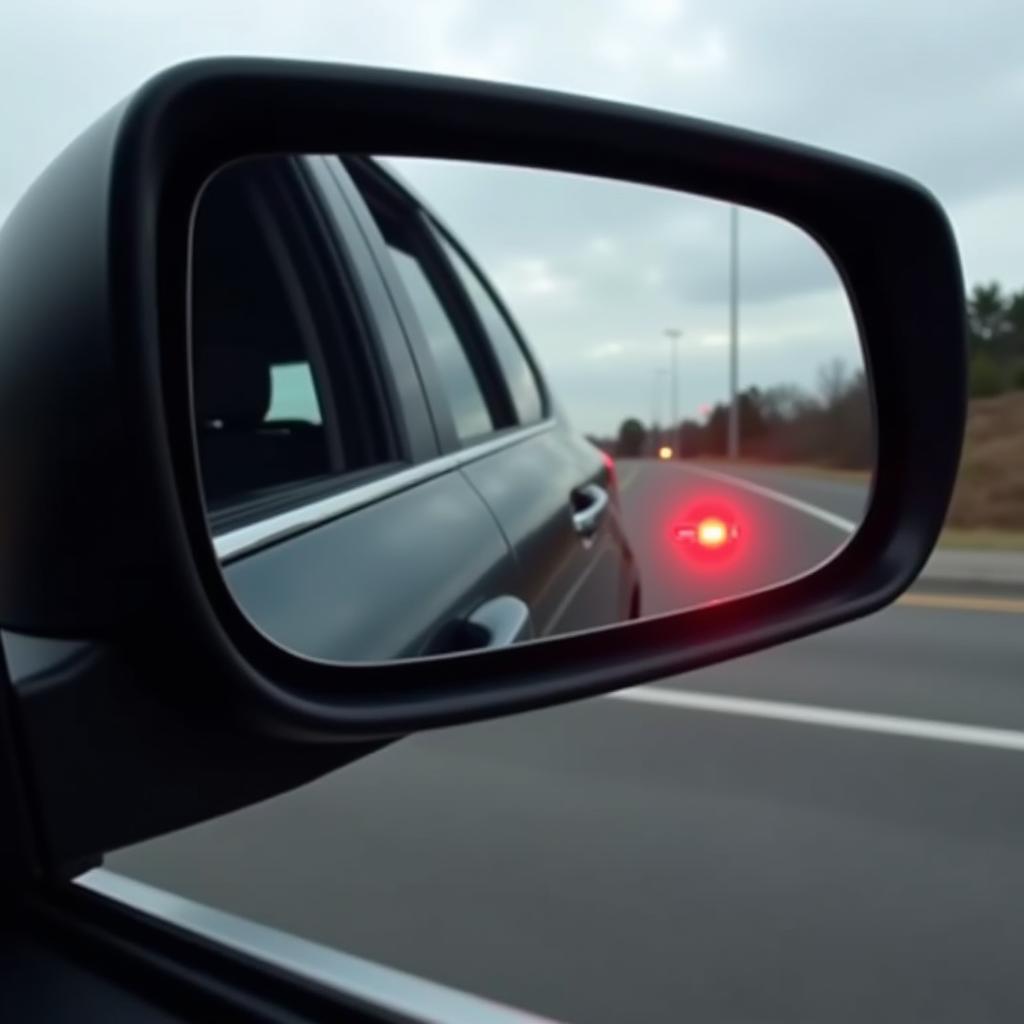The brake pad warning light illuminating on your Audi A6 dashboard is a clear signal that requires your immediate attention. Ignoring it could lead to compromised braking performance and potentially dangerous driving situations. While it usually means your brake pads are nearing the end of their lifespan, there could be other underlying causes. This comprehensive guide will walk you through understanding, diagnosing, and addressing the brake pad warning in your Audi A6.
Understanding the Audi A6 Brake Pad Warning System
Your Audi A6 is engineered with a sophisticated electronic system that monitors the condition of your brake pads. A sensor, often called a wear indicator, is embedded within the brake pad material. As you use your brakes, the pads wear down, and when they reach a critical point, the sensor triggers the warning light on your dashboard.
Common Causes of Brake Pad Warning Light
While worn brake pads are the most common reason for the warning light, several other factors can contribute to the issue:
- Worn brake pads: This is the most frequent culprit. Brake pads have a finite lifespan and gradually wear down with use.
- Damaged brake pad wear sensor: The sensor itself can become damaged or worn out, leading to a false warning.
- Worn brake rotors: If your brake rotors are significantly worn or damaged, it can affect the sensor’s accuracy and trigger the warning light.
- Electrical issues: Faulty wiring, a malfunctioning sensor connector, or problems with the car’s electrical system can also cause the warning light to illuminate.
 Audi A6 Brake Pad Sensor
Audi A6 Brake Pad Sensor
Diagnosing the Problem
Determining the exact cause of the brake pad warning light requires a proper diagnosis. Here’s what you can do:
- Check your brake pads visually. If you’re comfortable with basic car maintenance, you can visually inspect your brake pads. Look for significant wear or if the pad material is close to the wear indicator.
- Consult your Audi A6 owner’s manual. Your owner’s manual will provide specific information about your car’s brake system, including the location of the brake pad wear sensor.
- Seek professional diagnosis. If you’re unsure or uncomfortable inspecting the brakes yourself, it’s always best to consult a qualified mechanic specializing in Audi vehicles.
Addressing the Brake Pad Warning Light
The solution to the brake pad warning light depends entirely on the underlying cause:
- Replacing worn brake pads: If your brake pads are worn down, they need to be replaced. It’s highly recommended to replace all four brake pads at the same time, even if only one set triggers the warning light.
- Replacing a damaged brake pad wear sensor: If the sensor is faulty, it will need to be replaced. This is a relatively straightforward procedure for a mechanic.
- Addressing other issues: For worn rotors, electrical problems, or any other underlying issue, addressing these problems will usually resolve the warning light.
 Audi A6 Brake Pad Replacement
Audi A6 Brake Pad Replacement
Why Addressing the Brake Pad Warning is Crucial
Ignoring the brake pad warning light can lead to several problems:
- Reduced braking performance: Worn brake pads significantly reduce your car’s braking efficiency, increasing stopping distances and the risk of accidents.
- Damage to brake rotors: Driving with worn brake pads can severely damage your brake rotors, leading to costly repairs.
- Safety hazards: Compromised braking ability puts you and others on the road at risk.
Preventing Future Brake Pad Warning Lights
While brake pad wear is inevitable, you can take steps to prolong their lifespan and prevent premature wear:
- Smooth braking: Avoid harsh braking whenever possible. Gradual braking reduces wear and tear on your brake pads.
- Anticipate traffic flow: Look ahead and anticipate traffic patterns to minimize unnecessary braking.
- Regular maintenance: Adhere to your Audi A6’s recommended maintenance schedule, including regular brake inspections.
 Audi A6 Brake System Inspection
Audi A6 Brake System Inspection
Expert Insight
“Many car owners underestimate the importance of regular brake inspections,” says Mark Stevenson, a seasoned Audi mechanic with over 20 years of experience. “A simple inspection can identify potential brake issues early on, preventing costly repairs and ensuring your safety on the road.”
Conclusion
The brake pad warning light on your Audi A6 is a crucial safety feature that should never be ignored. Understanding its causes and taking prompt action ensures optimal braking performance and your safety on the road. Regular maintenance and proactive care will go a long way in preventing future brake pad issues and keep your Audi A6 running smoothly for years to come.
If you’re experiencing issues with your Mercedes E320 brake warning light, you can find helpful information in our guides on how to reset the brake warning light on a Mercedes E320 W211, Mercedes Benz brake wear warning light, 2003 Mercedes E320 brake warning light, and 2004 Mercedes E320 brake warning.
FAQs
Q: How long can I drive with the brake pad warning light on?
A: It’s not recommended to drive with the brake pad warning light on. Seek immediate inspection and address the issue.
Q: How much does it cost to replace brake pads on an Audi A6?
A: The cost varies depending on factors like location, Audi model, and labor costs. It’s best to consult a mechanic for an accurate estimate.
Q: Can I replace Audi A6 brake pads myself?
A: While possible, it’s recommended to have a professional handle brake pad replacement to ensure it’s done correctly.
Q: How often should brake pads be replaced?
A: Brake pad lifespan varies depending on driving habits and conditions. It’s best to refer to your Audi A6 owner’s manual for recommended replacement intervals.
Q: What happens if I continue driving with worn brake pads?
A: Continued driving with worn brake pads can lead to rotor damage, reduced braking performance, and increased risk of accidents.

